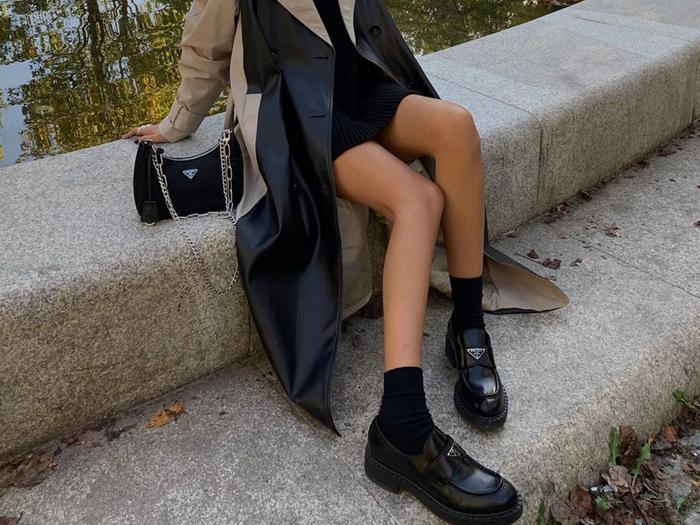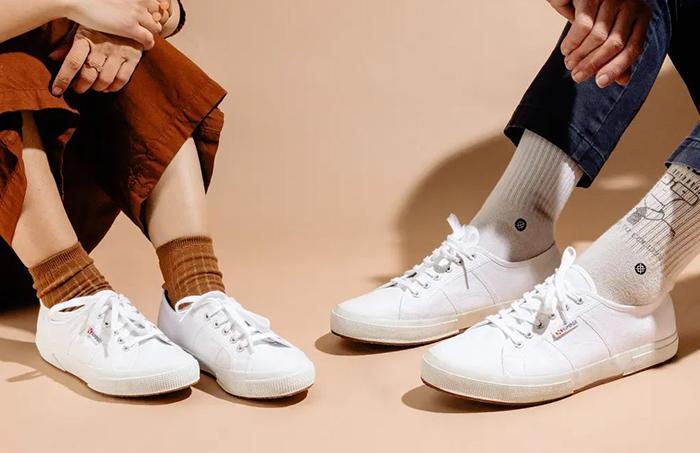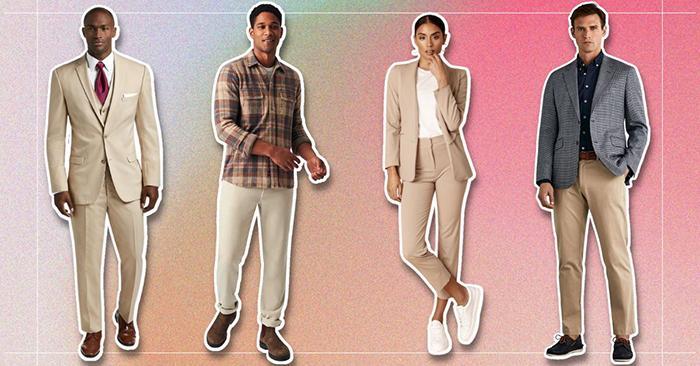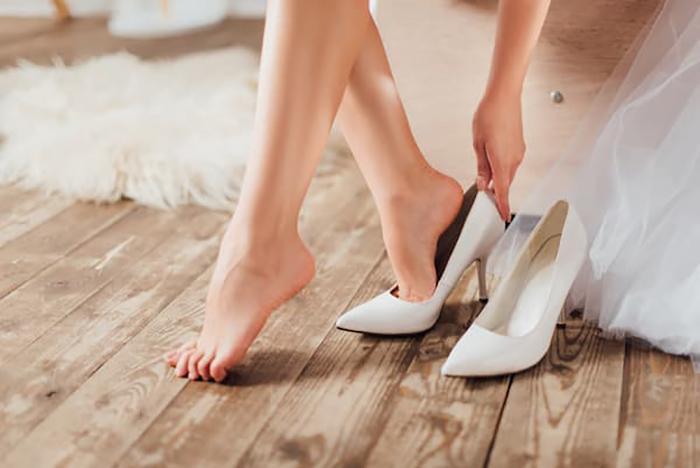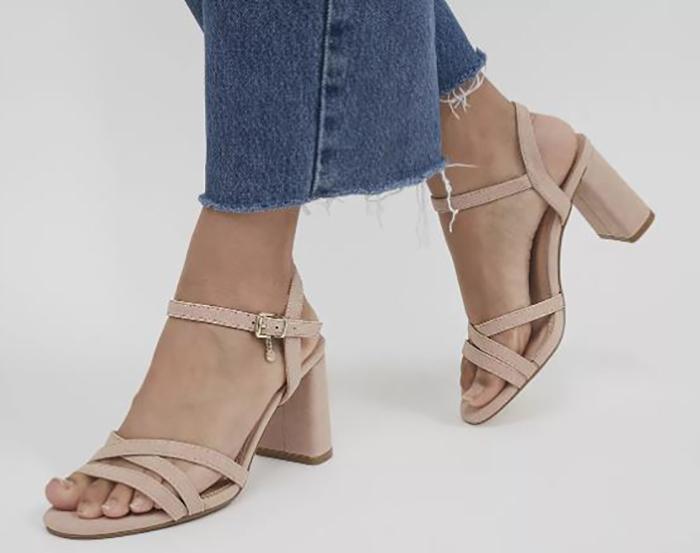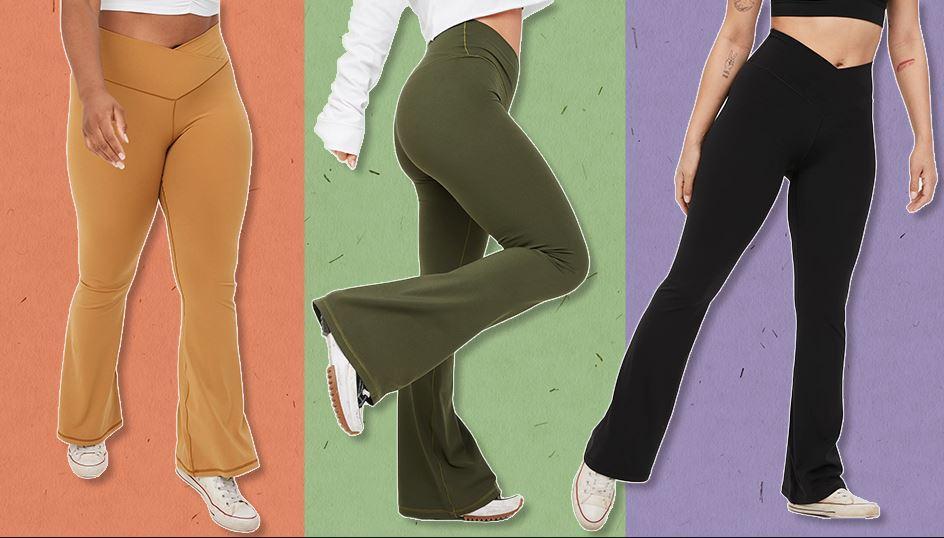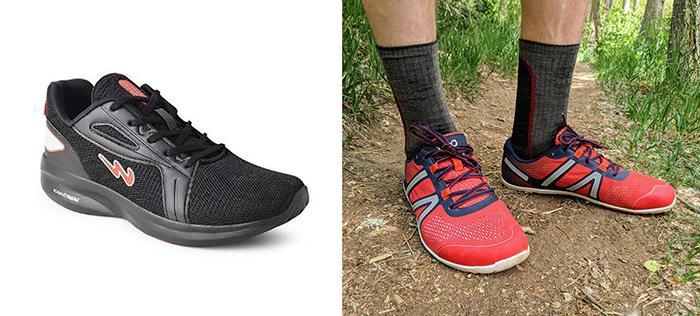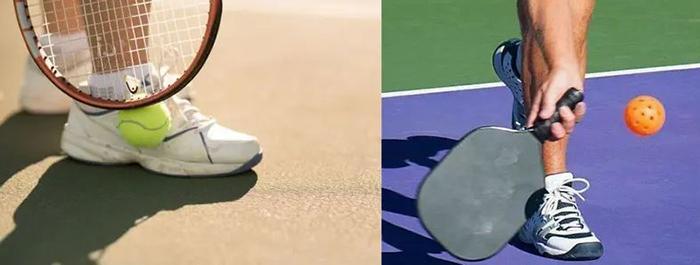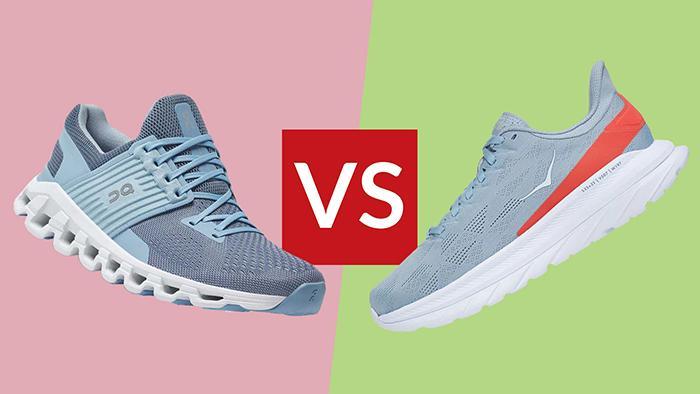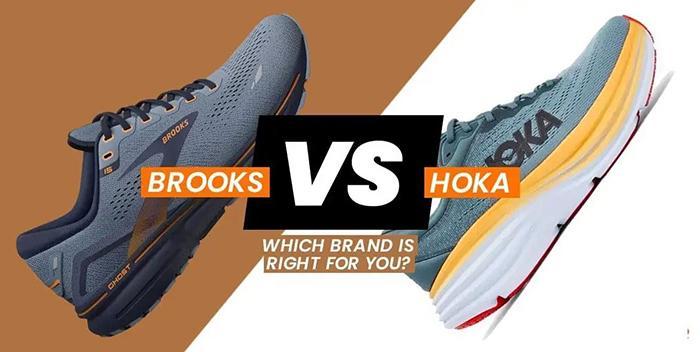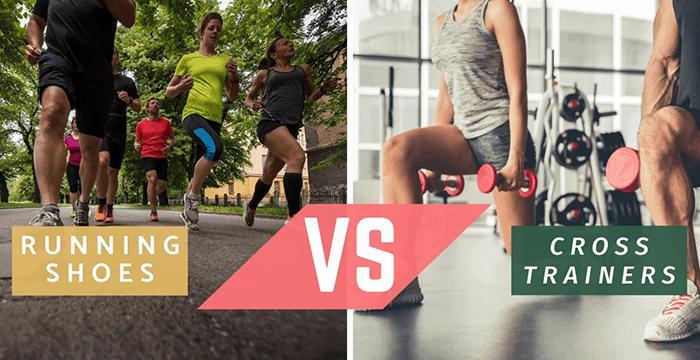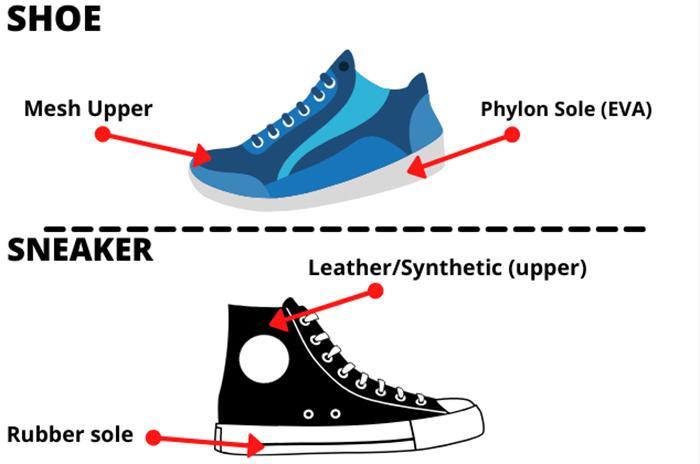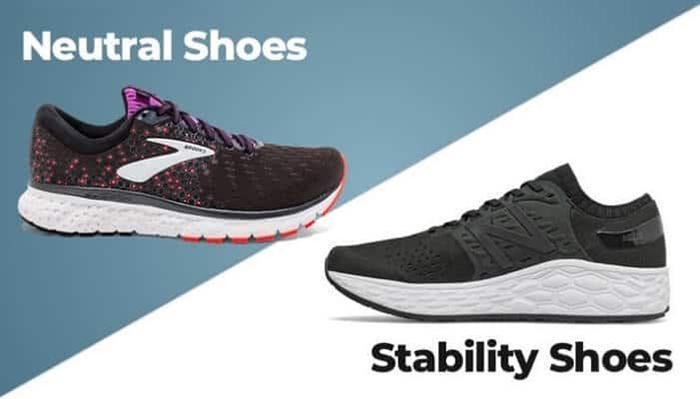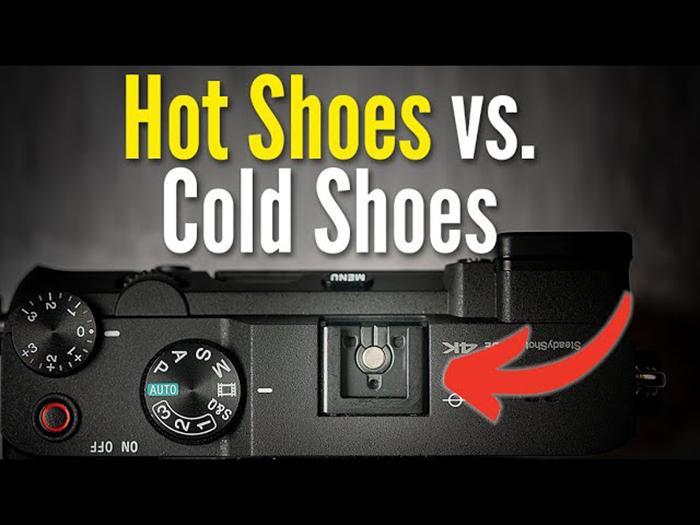Slips and falls can lead to serious injuries, especially in work environments or during sports activities. That’s why it’s crucial to know how to tell if shoes are non-slip.
In this blog post, we’ll explore the essential features of slip-resistant footwear, from the sole materials to their unique patterns that enhance grip on slippery surfaces.
You Are Watching: How To Tell If Shoes Are Non Slip Updated 02/2025
Whether you’re a shoe enthusiast or simply looking for safety solutions, stick with us as we delve into the world of slip-resistant shoes and learn practical tips for buying and maintaining them.
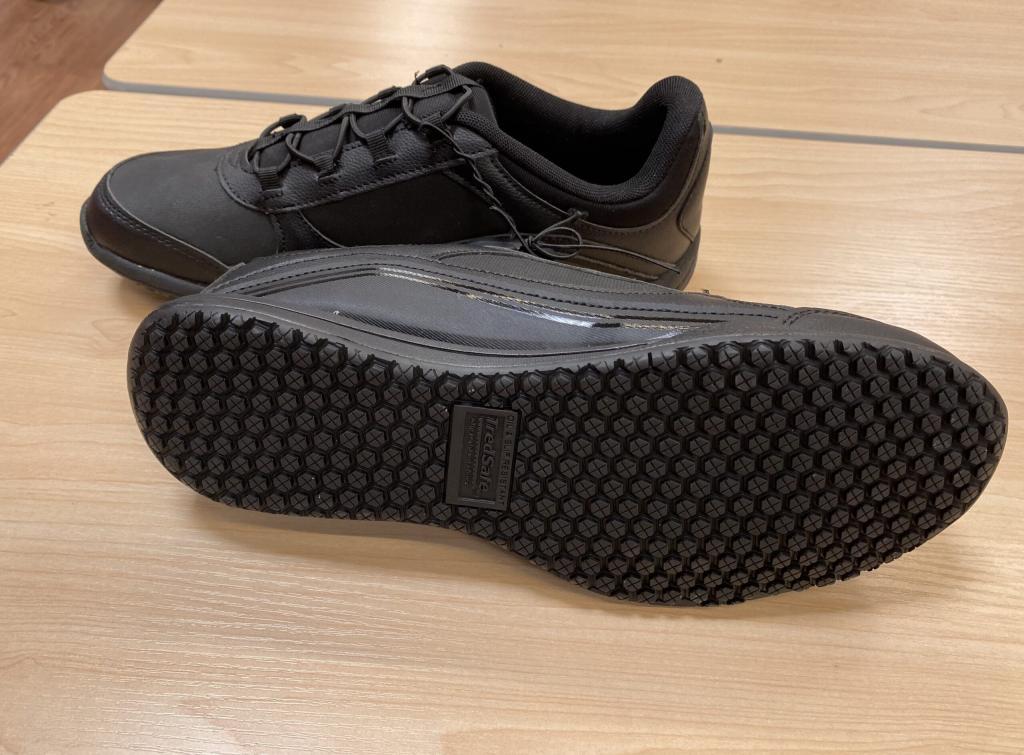
Key Takeaways
- Non – slip shoes are designed to prevent slips and falls on wet, oily or slippery surfaces in different industries such as healthcare, food service, and hospitality.
- Look for the “Non-Slip” label or rating, check the outsole material and pattern, and consider slip resistance test results to identify non-slip shoes.
- Different types of non-slip shoes include work shoes/boots for various industries, athletic shoes for different sports and activities, and sandals/flip-flops for casual wear.
- Maintaining your non-slip shoes by cleaning them regularly and replacing worn-out soles can help ensure their effectiveness in preventing slips and falls.
Understanding Non-Slip Shoes
Non-slip shoes are specially designed to prevent slips and falls on wet, oily, or slippery surfaces in various industries such as healthcare, food service, and hospitality.
Defining Non-Slip Shoes
Non-slip shoes, also known as slip-resistant or traction shoes, are specifically designed to provide enhanced stability and grip on slippery surfaces. These types of footwear are especially important for individuals who work in industries where spills or wet floors are common, such as restaurants, hospitals, and construction sites.
Typically made from sturdy materials like polyurethane or ethylene vinyl acetate (EVA), the soles of non-slip shoes are slightly rounded with intricate patterns that increase surface contact with the ground.
This design ensures better traction and reduces the risk of slips and falls by allowing wearers to maintain a strong footing even on slick surfaces. For example, workers in commercial kitchens often rely on slip-resistant sneakers when rushing around a busy kitchen without worrying about slipping due to spilled liquids or food particles.
Importance And Purpose In Different Industries
Non-slip shoes play a crucial role in various industries, helping to reduce the risk of injury due to slips and falls on slippery surfaces. This specialized footwear is particularly essential for workers in environments where spills, grease, or wet floors are common occurrences.
Industries such as construction sites, medical facilities, factories, and even retail stores benefit from non-slip footwear by adhering to occupational health and safety standards.
In fact, slip-resistant shoes have been proven to cut slip/fall rates by half – a statistic that has prompted numerous companies to invest in this type of protective gear.
How Non-slip Shoes Work
Non-slip shoes are ingeniously designed to provide a higher level of grip and traction on slippery surfaces, making them an essential safety feature for various industries such as restaurants, construction sites, and hospitals.
They work primarily by utilizing friction – the resisting force encountered when one surface rubs against another.
The outsole of non-slip shoes consists of a soft and pliable rubber material that effectively grips onto even the most slippery floors. The tread pattern plays a crucial role in maintaining grip by using shapes such as squiggles, circles or hexagons arranged strategically on the shoe’s bottom surface.
For example, imagine you’re wearing non-slip shoes in a busy restaurant kitchen where spills are common occurrences. As you walk across a slick, greasy floor with your non-slip footwear, the innovative sole design maintains contact with the floor through its soft rubber compound while pushing grease away from your path via its smartly-designed tread patterns – thus preventing any potential slip-and-fall accidents.
Signs Of Non-Slip Shoes
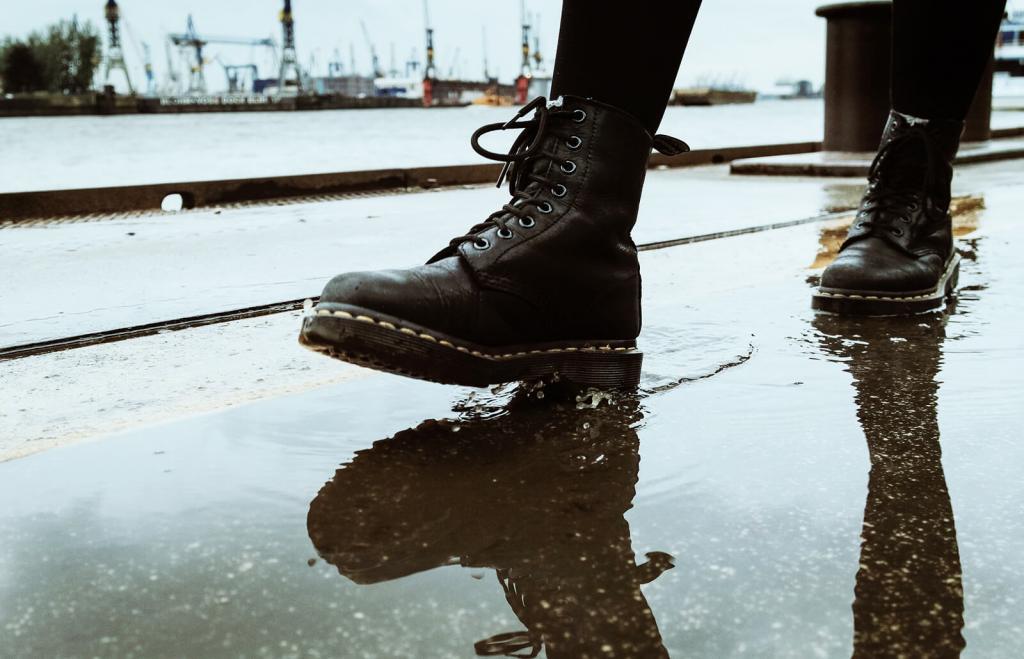
Look for a “Non-Slip” label or rating, check the outsole material and pattern, and consider slip resistance test results to identify non-slip shoes.
The “Non-Slip” Label Or Rating
One of the quickest ways to identify non-slip shoes is by checking for the “non-slip” label or rating. This labeling system usually indicates that a shoe has undergone specific safety testing and meets industry standards for slip resistance.
For example, a shoe with an ASTM F2913-11 SATRA TM144 rating would indicate that it provides excellent slip-resistance on wet and oil surfaces. However, not all shoes may have this label visible, so it’s important to also consider other signs of slip-resistant footwear such as the outsole material and pattern.
Outsole Material And Pattern
Another key factor to look out for when determining if shoes are non-slip is the outsole material and pattern. Non-slip shoes typically feature soles made of sturdy, slightly rounded polyurethane or ethylene vinyl acetate (EVA) that provide extra grip on slippery surfaces.
The outsole’s tread pattern can also play a vital role in slip-resistance. Small squiggles, circles, or hexagons on the bottom of the shoe can increase traction and prevent slipping.
Read More : How To Clean Kizik Shoes Updated 02/2025
Additionally, grooves on the sole help channel water away from the surface area of your foot to lower slip risk further.
Slip Resistance Test
One way to test the slip resistance of shoes is through a test called the “SATRA TM144” or “ASTM F2913” test. This involves measuring how much force is required for someone to start slipping on a surface while wearing the shoe being tested.
A shoe that meets industry standards will have a lower coefficient of friction, meaning it requires more force before slipping occurs, indicating it has good slip-resistant properties.
However, it’s important to note that this test doesn’t always account for real-world conditions such as different types of surfaces and contaminants like oil and water. So, checking for other signs of non-slip shoes like rubber outsoles with deep grooves can be just as crucial in ensuring you’re getting a reliable pair of slip-resistant shoes.
Different Types Of Non-Slip Shoes
There are various types of non-slip shoes available, including work shoes/boots for different industries, athletic shoes for various sports and activities, and even sandals and flip-flops for casual wear.
Work Shoes/boots For Various Industries
Non-slip shoes are essential for different industries where workers face slip hazards daily. Here are some of the work shoes and boots you can choose from in different industries:
- Restaurant: Slip-on clogs or shoes with enclosed toes are ideal for kitchen staff. Look for non-slip crocs, sneakers, or work boots with improved grip.
- Healthcare: Look for slip-resistant footwear designed specifically for medical professionals like nurses and doctors. Shoes with a stable base and comfortable cushioning will provide comfort even during extended shifts.
- Construction: Consider buying slip-resistant steel-toed boots that protect your toes and feet from accidental falls on the construction site.
- Postal service: Opt for slip-resistant athletic shoes that provide cushioning, comfort, and maximum traction to avoid slipping while delivering mail.
- Janitorial services: Choose a lightweight shoe model built with sturdy materials like leather or rubber that enhance traction over slippery surfaces.
- Warehousing/Manufacturing: Work boots with improved grip are an excellent choice to prevent slips, trips, and falls when working in manufacturing plants or warehouses.
Remember, when selecting non-slip work shoes and boots, always consider the environment you will be working in as well as the required industry standards for safety footwear.
Athletic Shoes For Different Sports And Activities
Athletic shoes are designed with specific features to cater to different sports and activities. Here are some examples:
- Running Shoes: Look for shoes with good traction control on both dry and wet surfaces. Also, check for flexible soles that allow for natural foot movement.
- Basketball Shoes: Opt for high-top shoes that provide ankle support, along with a sturdy outsole that allows for quick direction changes on the court.
- Soccer Cleats: Consider cleats with rubber or molded soles that provide excellent grip on grassy fields while offering stability during sudden movements.
- Tennis Shoes: Choose shoes with durable outsoles that offer traction on clay or hard courts while providing support for lateral movements.
- Cross-Training Shoes: Look for versatile shoes that can be used for multiple activities, featuring a mix of cushioning and flexibility for all-around performance.
Remember to look for non-slip or slip-resistant features in athletic shoe options as well, especially if you plan on using them in wet conditions or slippery surfaces.
Sandals And Flip-flops For Casual Wear
Sandals and flip-flops are a great option for casual wear. While they may not be the best choice for slippery or wet surfaces, there are non-slip options available. Here are some things to look for when choosing non-slip sandals or flip-flops:
- Check the label: Look for shoes with a slip-resistant rating or label to ensure that they have been tested and meet industry standards.
- Tread patterns: Non-slip sandals and flip-flops will usually have a tread pattern on the sole that helps provide better grip on wet surfaces.
- Rubber soles: A rubber sole is often used in non-slip footwear as it provides better traction than other materials.
- Sturdy sole: Make sure the sole of your sandals or flip-flops feels sturdy and doesn’t bend too easily. This will help provide support on uneven ground and prevent slips.
- Consider the environment: If you plan on wearing your non-slip sandals or flip-flops in wet or greasy environments, choose an option with extra grip features like an anti-skid liner.
- Comfortable fit: Just because you need non-slip shoes doesn’t mean you should sacrifice comfort! Look for footwear with cushioning or arch support that will keep your feet comfortable all day long.
Remember to regularly clean and inspect your non-slip sandals or flip-flops, and replace them if the soles start to wear down. With these tips in mind, you’ll be able to enjoy casual footwear without worrying about slipping!
Buying Non-Slip Shoes
Consider the particular environment where they will be worn, such as a restaurant or construction site.
Choosing Appropriate Footwear For The Environment
It is essential to select the right footwear for the environment to ensure optimal safety and comfort. When choosing non-slip shoes, one should consider the type of industry they work in or activity they engage in.
In addition, it’s important to keep in mind that not all non-slip shoes are created equal. The sole of the shoe needs to match the particular conditions of your work environment.
For example, if you work around grease or oil on concrete floors (like restaurants), selecting slip-resistant footwear that has superior traction on slick surfaces may be more beneficial than those designed primarily for wet environments like hospitals or spas.
Considering Industry-standard Slip-resistant Rating
When buying non-slip shoes, it is crucial to consider the industry-standard slip-resistant rating. Slip-resistant shoes are rated based on their ability to provide traction and prevent slip and fall accidents.
For instance, if you work in a restaurant or hospital where floors can be slippery due to spilled liquids, your non-slip shoes should have a high COF score. A higher COF score means better traction and less likelihood of slipping.
As such, when selecting non-slip shoes for your workplace or activities, look out for ones with appropriate slip-resistant ratings suitable for your occupation or intended use.
Balancing Comfort And Style
When buying non-slip shoes, it’s important to balance both comfort and style. Slip-resistant footwear is often associated with chunky and utilitarian designs, but there are options available that don’t compromise on fashion.
It’s also essential to choose the appropriate footwear for your environment. For instance, if you work in a restaurant where liquids frequently spill on the floor, look for slip-resistant work shoes specifically designed for those conditions.
Maintaining Non-Slip Shoes
Regular cleaning and inspection of non-slip shoes is essential for maintaining their slip-resistant qualities.
Regular Cleaning And Inspection
Read More : Hiking Shoes Vs Trail Runners Updated 02/2025
It’s important to take good care of your non-slip shoes to maintain their effectiveness. Here are some tips for regular cleaning and inspection:
- Clean your shoes after each use to remove any dirt or debris that may have accumulated on the soles.
- Use a soft – bristled brush or cloth and mild soap and water to clean the soles of your shoes thoroughly.
- Check the treads of your shoes for grease buildup or food debris that may have become trapped. Remove any debris using a toothbrush or small tool.
- Inspect the rubber outsoles of your shoes regularly and replace them if worn out. High – quality rubber outsoles with deep grooves provide better traction and slip resistance.
- Test your non-slip shoes on a non-slip surface periodically to ensure their effectiveness.
By following these simple steps, you can help maintain the slip-resistance of your non-slip shoes and keep them in good condition for longer.
Replacing Worn Out Soles
Maintaining your non-slip shoes is crucial to ensuring their longevity and effectiveness. One of the essential steps in taking care of these shoes is replacing worn out soles.
Over time, the rubber on the bottom of non-slip shoes can wear down, reducing traction and increasing the risk of slips and falls. By replacing worn-out soles, you can restore your shoe’s slip-resistant quality and safety features.
It’s important to remember that even a high-quality pair of non-slip shoes will eventually wear out with regular use.
For those who work in industries where slip resistance is critical, such as healthcare or food service, proper maintenance of non-slip footwear requires regularly inspecting for any defects.
Promptly replacing worn-out soles not only keeps employees safe but also helps maintain industry-specific safety standards.
Popular Non-Slip Shoe Brands
Nike, Vans, Skechers, and Crocs are some of the popular brands that offer slip-resistant footwear for different activities and industries.
Nike
Nike is a globally recognized brand that produces high-quality and durable shoes, including non-slip options. The company provides a range of stylish designs suitable for different industries, such as healthcare, foodservice, and construction.
Nike’s non-slip shoes feature slip-resistant outsoles with excellent traction and grip to ensure stability on wet or oily surfaces. These shoes are perfect for people who work in challenging environments where safety is paramount.
For those who prioritize style, Nike offers trendy non-slip athletic shoes that are comfortable to wear during physical activities like running or hiking.
Vans
Vans are a popular choice for non-slip shoes, especially among skateboarders due to their superior traction. Vans Authentic non-slip shoes come in a range of styles, colors, and patterns, including Zinnia/True White and Hawaiian Floral.
Although all Vans shoes are slip-resistant, the level of slip-resistance may vary depending on the shoe style and type of floor they are used on. That said, most Vans shoes provide excellent foot traction for different kinds of activities beyond skateboarding.
For instance, you can find non-slip athletic trainers or casual sandals within the brand’s range of offerings.
Skechers
Skechers is a popular footwear brand that offers a range of non-slip shoes. With slip-resistant outsoles designed for workplace safety, Skechers shoes are perfect for those working in industries where traction and grip are essential.
Not all Skechers shoes come with this feature, so it’s important to look for models specifically labeled as “slip-resistant” or “non-skid.” Some of the top-rated non-slip Skechers shoes include the Work Oswald Balder, Sure Track Erath, and Flex Advantage Slip Resistant Mcallen.
Crocs
When it comes to popular non-slip shoe brands, Crocs is definitely worth mentioning. While they may not be the first brand that comes to mind when you think of slip-resistant shoes, all Crocs are actually slip-resistant thanks to their trademarked Crocs Lock™ slip-resistant tread.
However, it’s important to note that while many Crocs clogs have ample traction, they may not be suitable for jobs requiring specific slip-resistant features for extremely slick surfaces.
Nonetheless, the versatile design and reliable slip-resistance make Crocs a go-to choice for many shoe lovers.
Conclusion
In conclusion, it’s essential to know how to tell if shoes are non-slip, especially if you work in an industry that requires slip-resistant footwear. Look for the “non-slip” label or rating, examine the outsole material and pattern, and test the shoe’s slip resistance.
Consider different types of non-slip shoes available on the market and choose appropriate footwear for your environment while balancing comfort and style. Don’t forget to maintain your non-slip shoes regularly by cleaning them and replacing worn-out soles.
Try out popular brands such as Nike, Vans, Skechers or Crocs with their reliable slip-resistant options.
Sources: https://www.centuryinshoes.com
Category: Shoes



